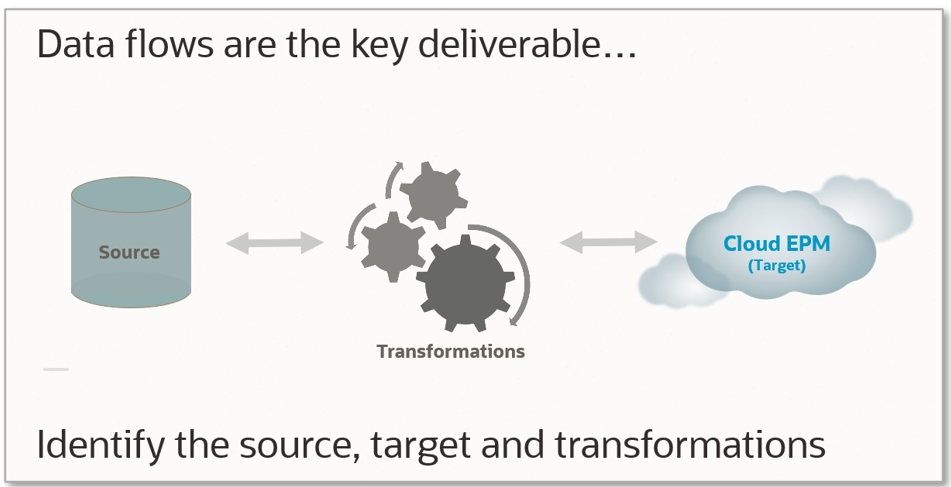Defining Data Flows
Data is the basis for all cloud Oracle Fusion Cloud Enterprise Performance Management business processes, and it is an important decision when it comes to selecting the tools to enable the ability to load the required data. Many times, a discussion related to integration tools precedes a discussion of the required data flows, and it is these data flows that drive the integration tools discussion.
The best practice for integrations is to first define data flows by determining the sources, transformations, and target business processes. This should be completed before any discussion of tools or integration features. For example, a data flow may use the Fusion GL as the source, Financial Consolidation and Close as the target, and then transformations to map the source chart of accounts into the dimensionality within Financial Consolidation and Close.

After the data flows are identified, it is then an exercise to determine the tools that will enable each of the data flows. For net-new cloud Cloud EPM implementations, it is recommended to first review the integration tools available in EPM before considering other tools. (For example, the Data Integration, which is available in each Cloud EPM business process can support most, if not all defined data flows.)
In other cases, a customer may have existing tools that are used for integrations, or tools which might be an IT standard. In these cases, it is easy to incorporate the Cloud EPM tools, and Cloud EPM APIs into an existing integration architecture or set of tools.
Even in the case of existing tools, it is still important to define all data flows as the starting point for the Cloud EPM integration requirements.